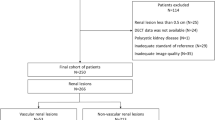Abstract
Objective
To analyze the characteristics of blood flow perfusion images at different injection levels to establish an evaluation standard for renal dynamic imaging injection quality and reduce misdiagnosis.
Methods
Data from 140 single-photon emission computed tomography renal dynamic imaging, collected in our hospital, were retrospectively analyzed. The scans were divided into four groups according to the injection quality: total leakage of the imaging agent (group A), partial leakage (group B), poor bolus injection quality (group C), and good bolus injection quality (group D). The time of appearance and regression of the pulmonary blood perfusion phase, the peak time in the abdominal aorta, and the ratio between peak count and actual drug injection count were analyzed. The renal dynamic imaging was repeated in low-quality examinations, and the comparison between the two exams provided the misdiagnosis rate caused by inadequate injections.
Results
The images of the lungs and abdominal aorta in group A were blurred and indistinguishable; thus, these exams were unreliable. Both appearance and fading time of the bilateral lung shadows were significantly different between groups B, C, and D (p = 0.002 and p = 0.003, respectively). The peak time and peak counting ratio in the abdominal aorta were also significantly different between these groups (p = 0.002 and p < 0.001, respectively). The misdiagnosis rates of renal dynamic imaging in groups A, B, and C due to the different injection levels were significantly different at 94.29%, 77.14%, and 18.29%, respectively.
Conclusions
The times of appearance and regression of the lung shadows and the peak time and peak count ratio in the abdominal aorta in the dynamic renal imaging perfusion phase can help assess the imaging agent injection quality and identify the need for a repeated examination. Improving the imaging agent injection quality can effectively reduce the renal function misdiagnosis rate.




Similar content being viewed by others
References
Blaufox MD, De Palma D, Taylor A, Szabo Z, Prigent A, Samal M, et al. The SNMMI and EANM practice guideline for renal scintigraphy in adults. Eur J Nucl Med Mol Imaging. 2018;45:2218–28. https://doi.org/10.1007/s00259-018-4129-6.
Nguyen DL, de Labriolle-Vaylet C, Durand E, Fernandez PX, Bonnin F, Deliu D, et al. Reproducibility of differential renal function measurement using technetium-99m-ethylenedicysteine dynamic renal scintigraphy: a French prospective multicentre study. Nucl Med Commun. 2018;39:10–5. https://doi.org/10.1097/MNM.0000000000000769.
Chan A, Ying L, Jianhua G, et al. SPECT renal dynamic imaging method and its influencing factors. China Equip. 2019;16:160–4.
Xie P, Li DX, Huang JM, et al. Measurement of glomerular filtration rate by renal dynamic imaging. China Imaging Technol. 2017;28:371–3.
Yao SH, Jiang BC, Yang XM, et al. Comparison of “bolus” quality of three injection methods in renal dynamic imaging. Hainan Sci. 2018;19:2946–7.
Chinese Medical Association. Clinical technical Code of Practice Nuclear Medicine. Beijing: People’s Military Medical Press; 2004, 157, 160, 161
Tian R, Zhou Y. Evolution and status of concept and staging criteria of chronic kidney disease. Int J Transplant Blood Purif. 2018;16:1–4.
Lu SQ, Lu YQ, Fu W. Research progress of application of radionuclide renal dynamic imaging bolus injection method. Int J Radiat Med Nucl Med. 2020;44:667–71.
Mi Y, Huang J, Ren Y, Xie P. Incidental detection of adrenal pheochromocytoma on 99mTc-DTPA renal dynamic scintigraphy. Clin Nucl Med. 2019;44:964–5. https://doi.org/10.1097/RLU.0000000000002711.
Qi W, Jianjun X, Lulu Y, Nini W. Influence of shot injection quality on GFR measurement of living kidney transplant donors by Gates method. Labeled Immunoassays Clin Med. 2021;28:1141–5.
Ma G, Shao M, Xu B, Tian J, Chen Y. Glomerular filtration rate measured by 99mTc-DTPA Gates method is not significantly affected by the premature or delayed initiation of image acquisition. Quant Imaging Med Surg. 2019;9:1103–9. https://doi.org/10.21037/qims.2019.06.14
Acknowledgements
We would like to thank Editage (www.editage.cn) for English language editing.
Funding
This work was supported by the Cuiying Science and Technology Innovation Program of Lanzhou University Second Hospital [Grant Nos. CY2019-BJ15].
Author information
Authors and Affiliations
Corresponding author
Ethics declarations
Conflict of interest
All authors declare that they have no conflict of interest.
Additional information
Publisher's Note
Springer Nature remains neutral with regard to jurisdictional claims in published maps and institutional affiliations.
Rights and permissions
About this article
Cite this article
Li, J., Huang, L., Luo, Y. et al. Inferences of SPECT renal dynamic imaging injection quality based on lung and abdominal aorta imaging features. Ann Nucl Med 36, 710–716 (2022). https://doi.org/10.1007/s12149-022-01750-8
Received:
Accepted:
Published:
Issue Date:
DOI: https://doi.org/10.1007/s12149-022-01750-8




